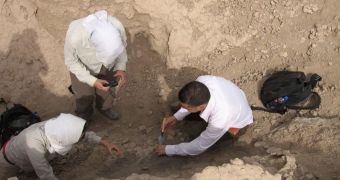For the first time in more than 20 years, foreign, non-Iraki investigators carried out an expedition in the Tigris-Euphrates delta. The goal of the research was to assess the potential links between the resources that these wetlands provide, and the emergence of cities in ancient Mesopotamia.
For centuries, this was the center of the world. The earliest civilizations - Sumer and Acadia – appeared around these parts, and they were followed by numerous others, before the Egyptians built their pyramids and Europe became relevant in the world.
For many years, archaeologists and historians alike have wondered about why these ancient cities appeared at this location, and not thousands of miles in either direction. The new investigation sought to shed light on this mystery.
The work was conducted by archeologists Jennifer Pournelle and Carrie Hritz, who worked together with geologist Jennifer Smith. They explain that Mesopotamia is the Greek word designating a land between two rivers – in this case the Tigris and the Euphrates.
Widely considered to be the Cradle of Civilization, the area is only 300 miles long by 150 miles wide, and it covers a portion of Iraq, southwestern Iran, southeastern Turkey and northeastern Syria.
“This is an important project because it has the potential to shed new light on the processes by which civilization rose in the Near East,” explains the program director for archaeological research at the US National Science Foundation (NSF), John Yellen.
The research team set out to investigate sites that were founded around 5,000 BC. They wanted to know how wetland resource allocation led the rise of the most powerful civilizations in the Near East.
“Our interest is in early settlement. The early period of settlement is always linked to the development of agriculture,” explains Hritz, who is an assistant professor of archaeological anthropology at the Pennsylvania State University.
“Next is systematic seismological study, coring and survey in order to relate past and future archaeological excavations and surveys to an explicit paleoenvironmental recor,” Pournelle adds.
“Amazingly, this has never been done. We need to work quickly on the ground-based operations, because some of this area is scheduled for re-flooding,” she goes on to say.
The team also says that conducting studies in a country at war was a very interesting experience indeed. The experts received the full support of Iraqi ministries, universities and authorities in conducting their work, and were escorted by armed security every step of the way.
The marshes they are investigating are scheduled to be flooded as soon as possible, and so all studies that can be conducted there need to get underway fast.

 14 DAY TRIAL //
14 DAY TRIAL //